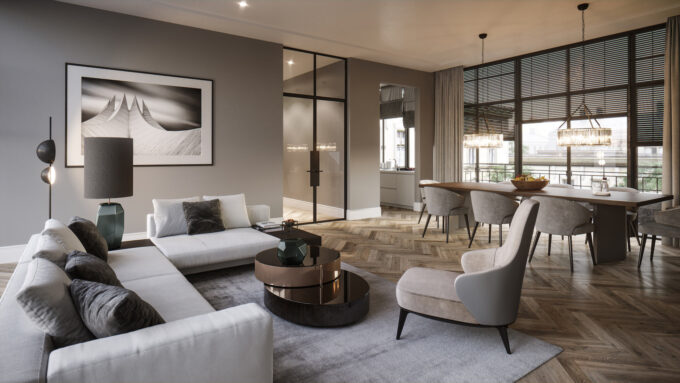
When it comes to transforming interior design concepts into tangible realities, the process of interior visualization plays a pivotal role. From initial ideation to final implementation, interior visualization allows designers and clients to envision and refine every aspect of a space before it is built. Here is a step-by-step guide to mastering the art of interior visualization:
Define Your Vision
Start by clearly defining the vision for your interior design project. Consider factors such as the intended purpose of the space, desired aesthetic style, and any specific requirements or constraints. This initial step lays the foundation for the entire visualization process.
Gather Inspiration
Next, gather inspiration from various sources such as interior design magazines, websites, and social media platforms. Create mood boards or digital collages to capture the look and feel you want to achieve in your space. This inspiration will guide the direction of your interior visualization efforts.
Develop Conceptual Designs
Using your vision and inspiration as a guide, begin developing conceptual designs for the space. Start with rough sketches or digital drawings to explore different layout options and design elements. Refine your concepts based on feedback and iterate until you are satisfied with the overall direction.
Create Detailed Renderings
Once you have finalized your conceptual designs, it’s time to create detailed renderings using interior visualization software. Utilize 3D modeling tools to accurately represent the dimensions and proportions of the space. Apply textures, materials, and lighting to bring your designs to life with photorealistic precision.
Review and Revise
Review the rendered images and virtual walkthroughs with your clients or stakeholders to gather feedback. Use this feedback to make any necessary revisions or adjustments to the design. Iterate until everyone is satisfied with the final result, ensuring that the visualization accurately reflects the desired vision for the space.
Present and Implement
Once the interior visualization is finalized, present the designs to your clients or stakeholders for approval. Use the rendered images and virtual walkthroughs to effectively communicate the design concepts and proposed solutions. Upon approval, move forward with implementing the designs, confident in the knowledge that your vision has been brought to life with precision and clarity.
Conclusion
Interior visualization is a powerful tool for bringing interior design concepts from concept to reality. By following this step-by-step guide, you can navigate the visualization process with confidence and achieve stunning results that exceed expectations. For those looking to master the art of interior visualization, partnering with a reputable 3D studio like Render Vision can provide the expertise and support needed to bring your vision to life with unparalleled creativity and precision.


